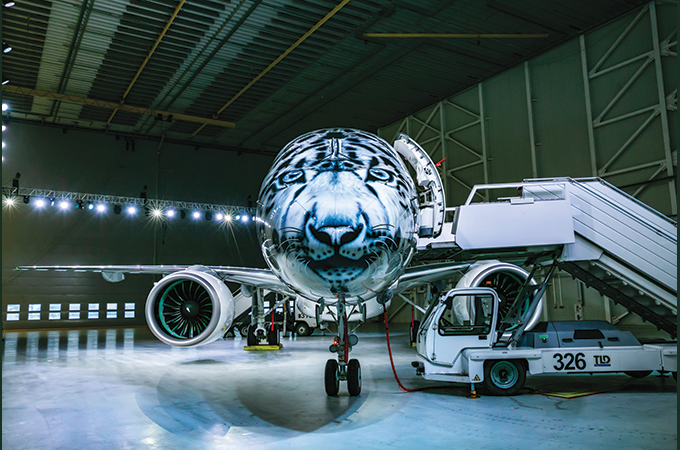
Air Astana, the flag carrier of Kazakhstan, achieved an improved financial performance during the first half of 2019. Whilst revenue was marginally down, the company reported an operating profit of $6.8 million, with EBITDAR up 49 per cent at $50 million, despite a challenging global economic backdrop.
The company continued to demonstrate its strong cost control, improving CASK by 7 per cent. The airline carried a total of 2.1 million passengers during the first half of the year, which was marginally higher than in 2018. Domestic traffic grew strongly by 9 per cent for the six-month period, which included a notable increase of almost 40 per cent in June compared to the same month 2018. This trend is expected to accelerate as a result of the strong traffic contributions from FlyArystan, the recently launched low-cost offshoot of Air Astana. President and CEO of Air Astana, Peter Foster, commented: “We are pleased to have been able to turn a first half loss in 2018 to a profit in 2019, at a time of general weakness in the industry. Our cost base remains one of the lowest in the world. Air Astana’s combination of high-quality service delivery and cost discipline has resulted in a strong improvement in financial results. In addition, the launch of FlyArystan on the first of May was a significant achievement for Air Astana. A sizeable share of the group’s total traffic is now being generated by customers who have never previously flown. More than 80,000 FlyArystan tickets priced below $26 have been sold during the peak season, which has contributed to traffic through the hubs in Almaty and Nur-Sultan growing by 30 per cent, and doubling from regional cities.” International transit traffic declined by 5 per cent due to the temporary suspension of services to India and a reduction in connecting traffic from Turkey and Ukraine, compensated by growth from China to destinations in the CIS. Air Astana’s fleet renewal programme is rapidly moving ahead, with one Airbus A320neo and two Embraer 190-E2 airliners having been added to the fleet during the first half of 2019. The new generation aircraft produce up to 15 per cent less CO2, which contributes significantly to the airline’s commitment to reducing carbon emissions. * Air Astana’s fleet currently comprises 36 Boeing 767/757, Airbus A320/A321 and Embraer E190/E190-E2 aircraft, with an average age of 7.3 years.Moscow flights to Domodedovo Airport Starting October 27, Air Astana will transfer flight operations from Moscow’s Sheremetyevo Airport to Domodedovo Airport. The transfer of flights will be carried out without any interruption to the schedule. This change of airport is for services from both Nur-Sultan (11 weekly services in winter) and Almaty (14 weekly services in winter). Air Astana’s reservation systems have been updated to reflect this change for flights from October 27, 2019. The change of airport in Russia’s capital is linked to the recent signing of a code-share agreement with S7 Airlines, with Domodedovo Airport being the Russian carrier’s operational base in Moscow.
